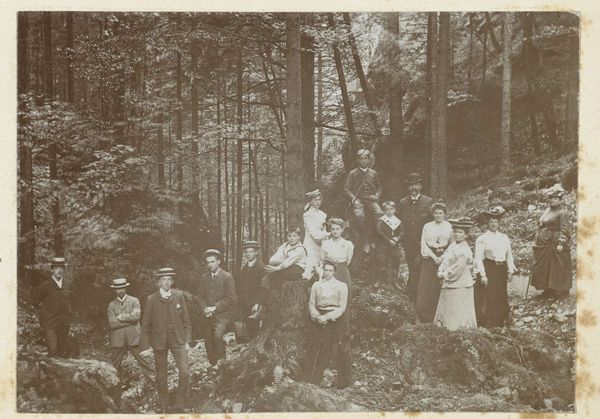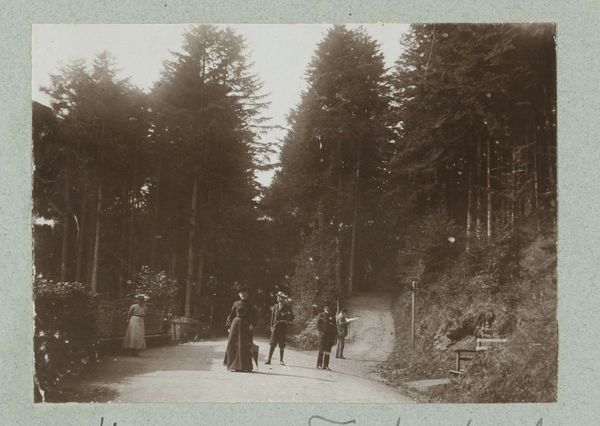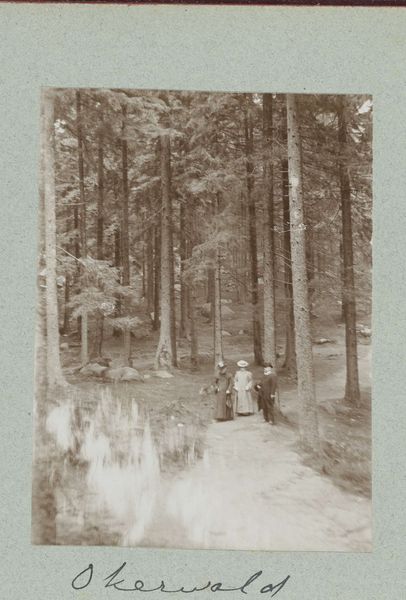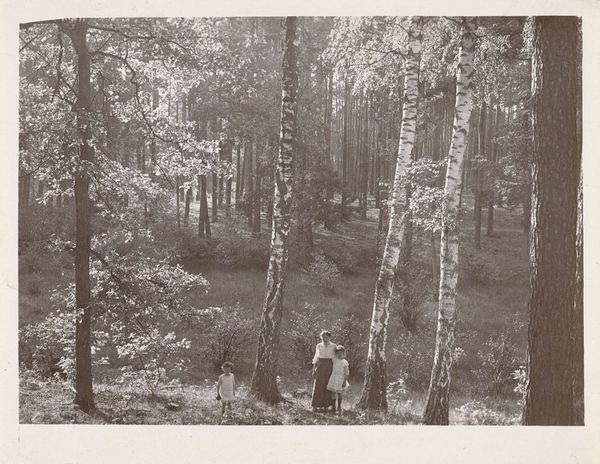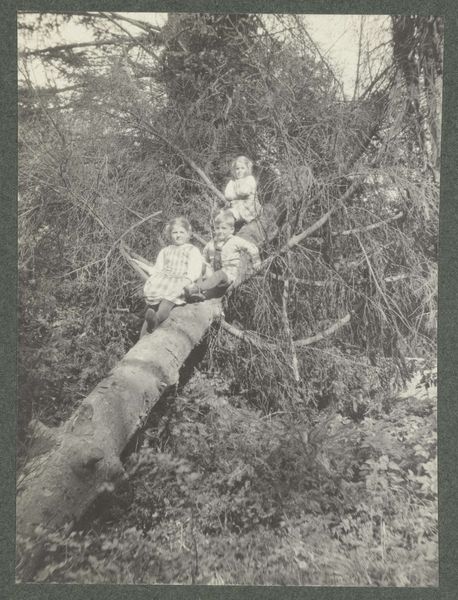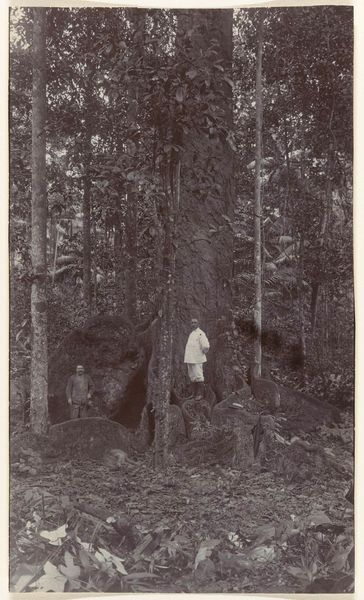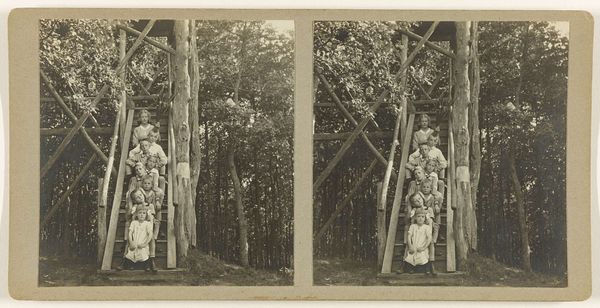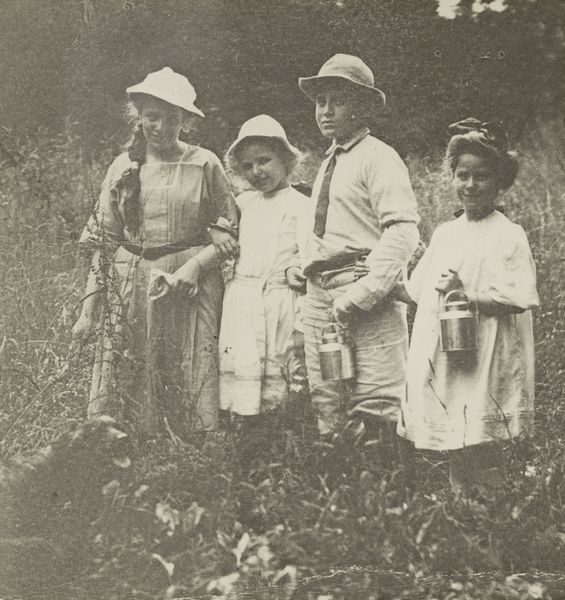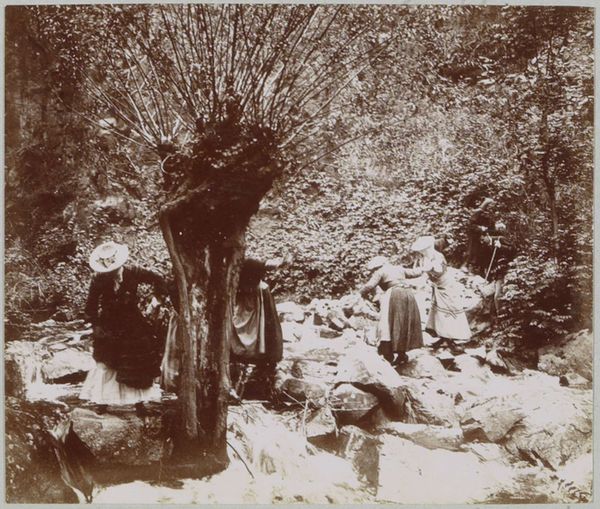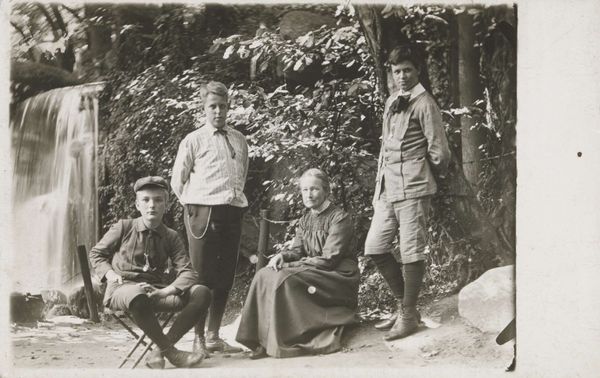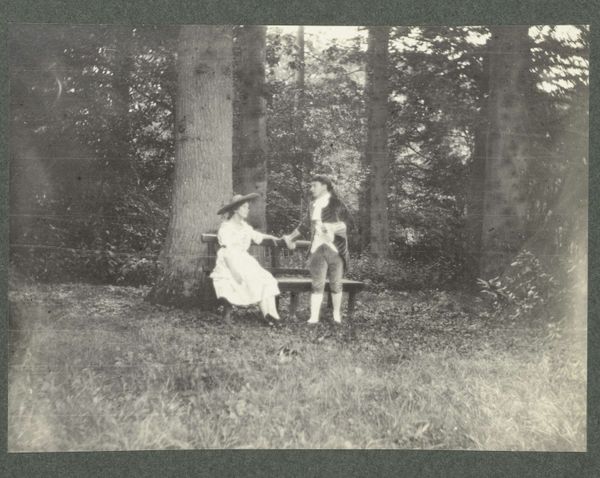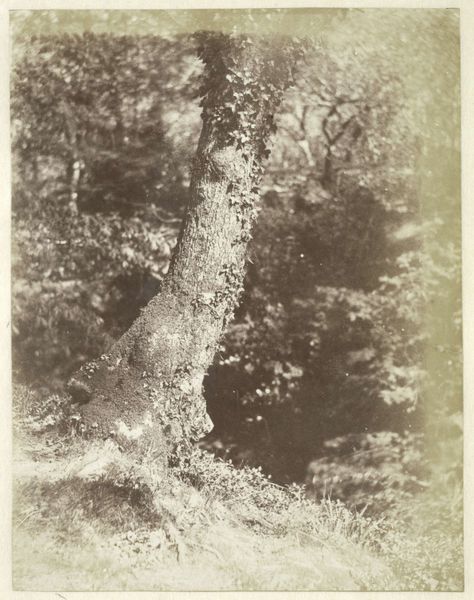
Marba en Eckart Titzenthaler, kinderen van de fotograaf, en een onbekend meisje en een onbekende vrouw in een bos 1918 - 1919
0:00
0:00
Dimensions: height 106 mm, width 82 mm, height 111 mm, width 87 mm
Copyright: Rijks Museum: Open Domain
Curator: Let's take a moment with this gelatin silver print from Waldemar Titzenthaler, likely captured between 1918 and 1919. It’s titled "Marba en Eckart Titzenthaler, kinderen van de fotograaf, en een onbekend meisje en een onbekende vrouw in een bos," which translates to 'Marba and Eckart Titzenthaler, children of the photographer, and an unknown girl and an unknown woman in a forest.' Editor: It's striking, immediately evocative. The sepia tones and high contrast create a strong feeling of nostalgia, a wistful glance back in time. There is also the strong vertical composition, framed by towering trees that act as compositional lines driving our vision downwards, towards these people. Curator: Exactly. It seems that Waldemar used his camera here to show his family inside the forest landscape; during his life, Titzenthaler significantly contributed to advancing photography, particularly portraiture, by blending technical mastery with artistic sensitivity, creating captivating images that documented his era. Editor: And there's such intentionality in their arrangement, or the lack thereof. They are organized seemingly casually near a silver birch, but there’s such geometric awareness behind that. What do you read from it? Curator: Given the era and Titzenthaler’s wider body of work, I think it suggests a romanticism towards nature that was particularly strong in Germany at the time. A retreat into an idealized past. Perhaps in response to the industrial changes of the society, especially considering it was taken so soon after WWI. The inclusion of family strengthens the tie between personal history and nature. Editor: The textural contrast, though, is what really grips me—the smooth, almost ethereal quality of the woman's dress against the rough, barky textures of the trees and foliage, even considering the sepia that is washing away any strong differentiation, creates a fascinating tension and some dynamic friction between forms. Curator: True, that tension embodies a complexity. He was making artistic photographs from this context; it's this convergence of social and aesthetic aims that continues to fascinate. Editor: Absolutely. By observing all the visual elements like composition, the sepia, the people represented within a natural composition and how their organization triggers our senses; it gave us so many possibilities to unlock the artwork in our mind.
Comments
No comments
Be the first to comment and join the conversation on the ultimate creative platform.
